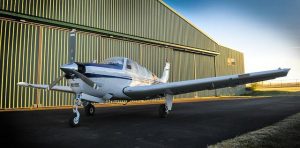
If you own a turboprop airplane, you may want to invest in a propeller coating. Turboprops aren’t powered by jet engines. For propulsion, they use one or more motor-driven propellers. A motor will turn the propellers so that the airplane generates propulsion. What is a propeller coating exactly, and why should you use it on your turboprop?
Overview of Propeller Coatings
Propeller coatings are products that are designed to form a protective layer over a propeller. They typically consist of epoxy sprays. After cleaning a propeller, you can apply a propeller coating to it. Spraying the propeller coating over the surface of the propeller will result in the formation of a new protective layer.
Benefits of Propeller Coatings
You can extend the life of propellers by using a propeller coating. Propellers don’t last forever. During flight, they are exposed to wear and tear. Eventually, propellers will require repairing or replacing. A propeller coating, however, can extend the life of a propeller. It will form a protective layer over the propeller so that it lasts longer.
Another benefit of using a propeller coating is corrosion protection. Propellers are typically made of metal. When exposed to oxygen, metal propellers may corrode. They’ll begin to oxidize, which causes them to corrode. Applying a propeller coating to a metal propeller will protect it from corrosion.
Propeller coatings will also protect the paint on a propeller. While some airplanes have a bare metal propeller, others have a painted propeller. Over time, the paint on a propeller may degrade and flake off. Rather than constantly repainting it, you can use a propeller coating. The propeller coating will seal the paint so that it doesn’t degrade or flake off as easily.
What to Look for When Choosing a Propeller Coating
Make sure the propeller coating is designed specifically for propellers. There are other epoxy sprays available for sale. Only propeller coatings, though, are designed for propellers. They are formulated to offer the highest level of protection for propellers.
You should check the instructions when choosing a propeller coating. While most of them consist of sprays, some of them require different steps to apply than others. You may notice, for instance, that some propeller coatings require priming beforehand when used on a bare metal propeller. If your propeller isn’t painted, you’ll need to prime it before applying the propeller coating to it.



